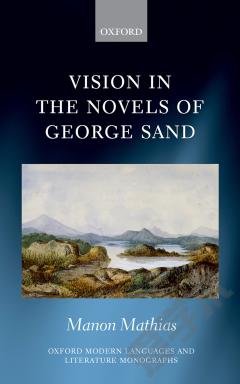Vision in the Novels of George Sand
This book considers the pull between the visual and the visionary in nineteenth-century France through an examination of George Sandâs novels. With an extensive corpus ranging from Sandâs early texts through to her later, less familiar works, it repositions Sandâs Åuvre alongside that of the major realist authors and demonstrates her distinctive understanding of the novel as a combination of the concrete and the abstract. By studying Sandâs engagement with visual models associated with realismâthe mirror, the visual arts, and the scientific gazeâthe book proposes a more sustained dialogue between Sandâs work and realism than has hitherto been acknowledged, but shows that Sand radically reworks these models to depict a dynamic, mysterious, and ever changing world. Whereas Sand has been read as an author bypassing reality in favour of the ideal, this study argues that she is committed to physical observation, but that she consistently ties this process with the conceptual and the visionary. The book breaks new ground by examining Sandâs literary engagement with the visual arts, and it offers the first sustained consideration of Sand as a writer of science. This study not only reassesses Sandâs writing practice, but also rethinks the relations between the visual and the novel in this period and argues that Sandâs work challenges our means of theorizing these relations. In her rejection of binaries and her syncretic understanding of vision, Sand breaks conventional categories and writes novels that are at once realist, visionary, mystical, and scientific.
{{comment.content}}








 京公网安备 11010802027623号
京公网安备 11010802027623号